
There are a thousand ways to lose weight and you may have tried a few too.
But if you’re reading this, there’s a high chance your efforts were futile.
Why?
The problem with most weight loss techniques-
They involve killing yourself with fasts and intense workouts which makes weight loss unsustainable.
Then there are diet supplements and products sold as ‘quick and easy weight loss tricks’ and we all know how unhealthy and ineffective they are.
What you need instead is a systematic approach.
Systems for Weight Loss
Today, I’m going to change your approach to weight loss for good by encouraging you to think about systems.
What is a system?
It is a simple routine effort that works on building habits and training your mind and body.
With systems, you don’t work on short-term goals. You work with a long-term vision.
It’s not just about losing 5 pounds this week or 25 pounds this month. It is about developing habits that become automatic and therefore sustainable.
We’re talking about lifestyle change and mindset change that will change you for life.
It’s not an overnight change, it’s a permanent one that happens steadily and certainly.
Also, what all weight loss efforts need are action and motivation and I urge you to think about them a bit.
ACTION and MOTIVATION
Most people see the motivation-action equation like this
Motivation ⇒ action
Today, I’m going to teach you a different equation.
Motivation ⇌ action
Yes! Action leads to motivation too! Remember this at the times when you’re feeling down and have lost all inspiration. Instead of moping and waiting for inspiration to come around, you DO something. You take ACTION. And the motivation will follow.

This is why I stress on the power of NOW. You don’t start your weight loss efforts next week or tomorrow. You start right away!
NOW, without much ado, let’s dive into developing some systems that will not only allow you to shed 10 pounds this month, but get into shape and be healthy for the rest of your life.
Step 1: Switch to a low carb diet
When it comes to weight loss, there is a common misconception that fat is your enemy but actually carbs are the sneaky culprits that cause obesity.
Carbs form most of the western diet because most grains like rice and wheat are nothing but carbs. This implies that all our common food from bread and pasta to pizza and rice are all the reasons for your excess weight.
What you need to focus is on cutting back the carbs and starch.
Why?
It’s actually a very simple science. When your body is starved on carbs, the insulin (hormone responsible for converting sugar to fat) level in the blood doesn’t spike and the body goes into a fat-burning state called ketosis.
This is the most effective way to get rid of fat.

What I need you to do is to pick up a pen and handbook (one that fits in your pocket or purse so you can keep it with you at all times) and write down your weight loss goals.
Next, go through this list of the different types of low-carb diets and pick the diet that is most suited for your goals.
Step 2: Make meal plans
Ever tried to get on a diet but found it hard to stick to? We always blame our weak willpower when we fail but in reality, the problem is that we lack effective systems and organization to make them work.
How to get organized?
We make a weight loss meal plan.
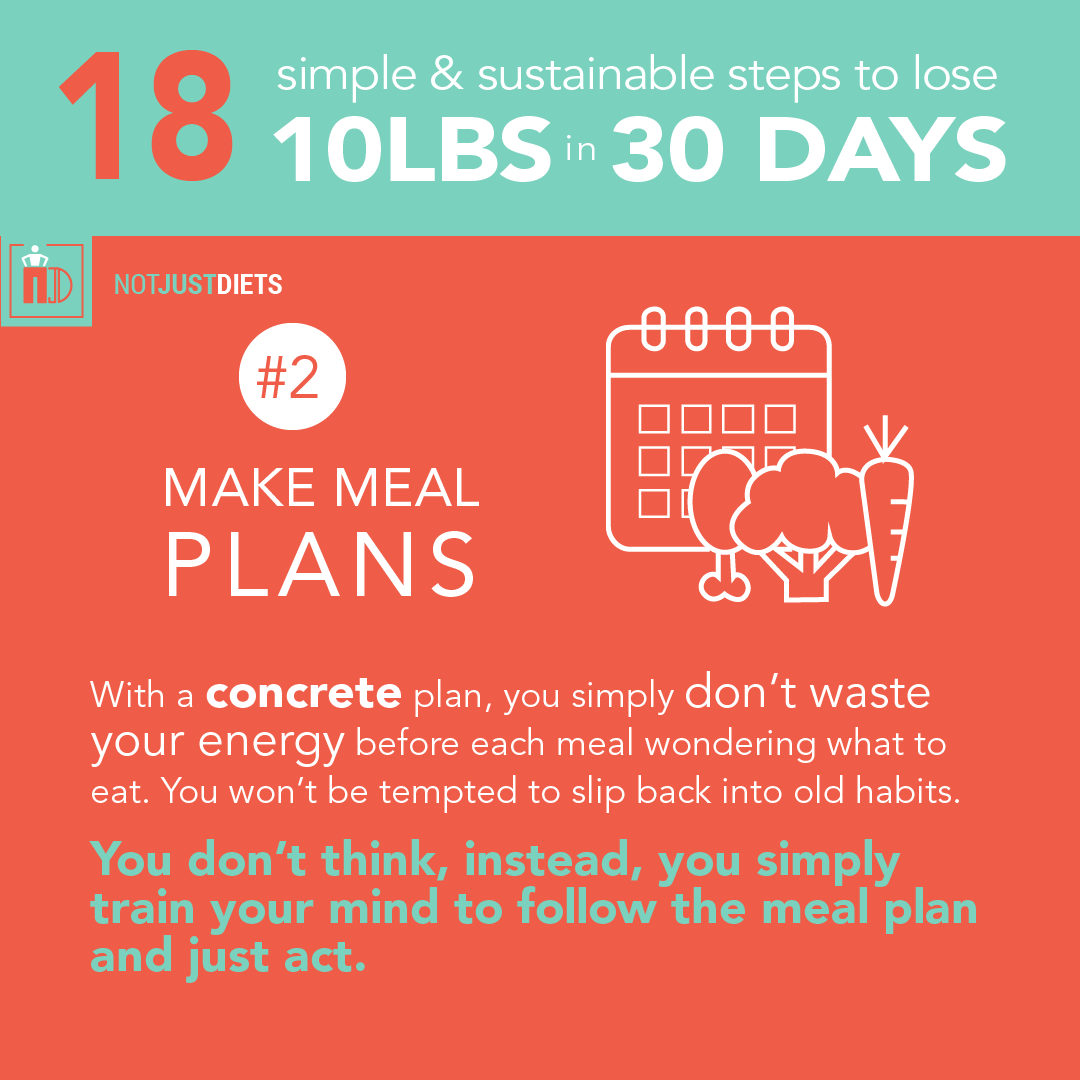
Get out the calendar app on your phone.
Next, go through this list of low-carb meal options and pick out the ones you like and are likely to eat.
On your calendar, fill out all 3 of the meals eachmeals of each day for the next 2 weeks. This is your weight loss meal plan for the next 2 weeks.
How do meal plans help?
You leave nothing to ambiguity and don’t waste your energy wondering what to eat before each meal. You don’t think, instead, you simply train your mind to follow the meal plan.
How do you make this system even better?
Step 3: Make meal preps
Pre-prepare your meals for the whole week on Sundays. Cut-up veggies, cook your meat, make portion sizes and ready-up as much as you can before-hand and store each meal in containers, ready to be microwaved. Leave as little of the cooking for the week as is possible.
How does this help?
When you have food ready and waiting for you, you reduce the odds of straying away from your diet plan. Plus, doing so saves you a lot of time, money and effort. Imagine how convenient it becomes!
If I told you that you need willpower to stick to a diet plan, it’s no new information but did you know that willpower is a limited resource? And what puts the least amount of load on it?
Convenience- the simpler and more convenient you make it, the more efficient your weight-loss system and more likely the chances of your weight loss efforts being fruitful.
Step 4: Know your alternatives
Do you know that there are low-carb alternatives for almost everything out there?
So you can’t eat the regular wheat products but there are several recipes like keto-pancakes and low-carb keto-cookies that are effective alternatives.
The problem with diets is that they make you feel dissatisfied and deprived. They put your will-power to a real test which doesn’t last. Soon, most people spring back to their old eating habits.
Alternatives keep your desires fulfilled and don’t drain your will power so your dieting efforts are long lasting. Building a knowledge base of foods you should and shouldn’t eat is a system that will help your long-term vision.
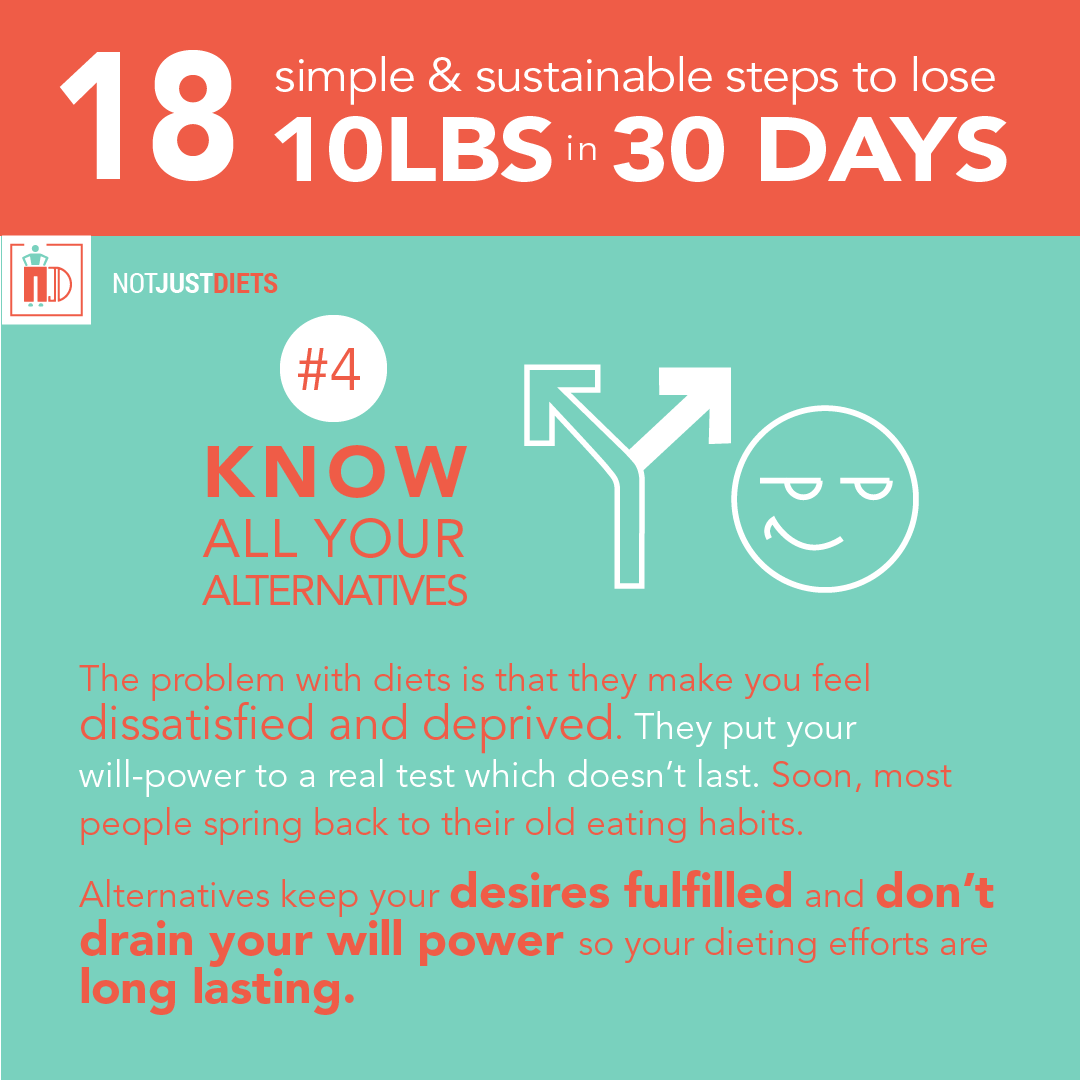
Step 5: Allow cheat days
Weight loss is not just a physical game, it’s more of a mental feat. You need to keep re-energizing yourself with little rewards.
Keep an optimistic outlook and allow yourself a cheat-meal full of your favorite foods once every week to satiate those carb cravings.
But isn’t this a setback?
I urge you to look at the big picture instead. You want to be able to do this for a longer period of time, so going easy once in a week will only help you keep on the track for longer instead of giving up because your willpower ran dry.

Is it just about the mind though? I have scientific reason to support these cheat meals. Cheat meals help with carb cycling. How does carb-cycling help with your weight loss goals?
Carb cycling prevents your weight loss from plateauing which is a common problem after you shed a few pounds.
There, you hit two birds with one stone!
Step 6: Drink enough water, especially before your meals
Drinking sufficient water is especially important during the initial phases of low-carb weight loss as the body goes through induction and adapts to the shift in eating habits. Staying hydrated helps combat the side effects of low-carb diets such as nausea, headache and bad breath.
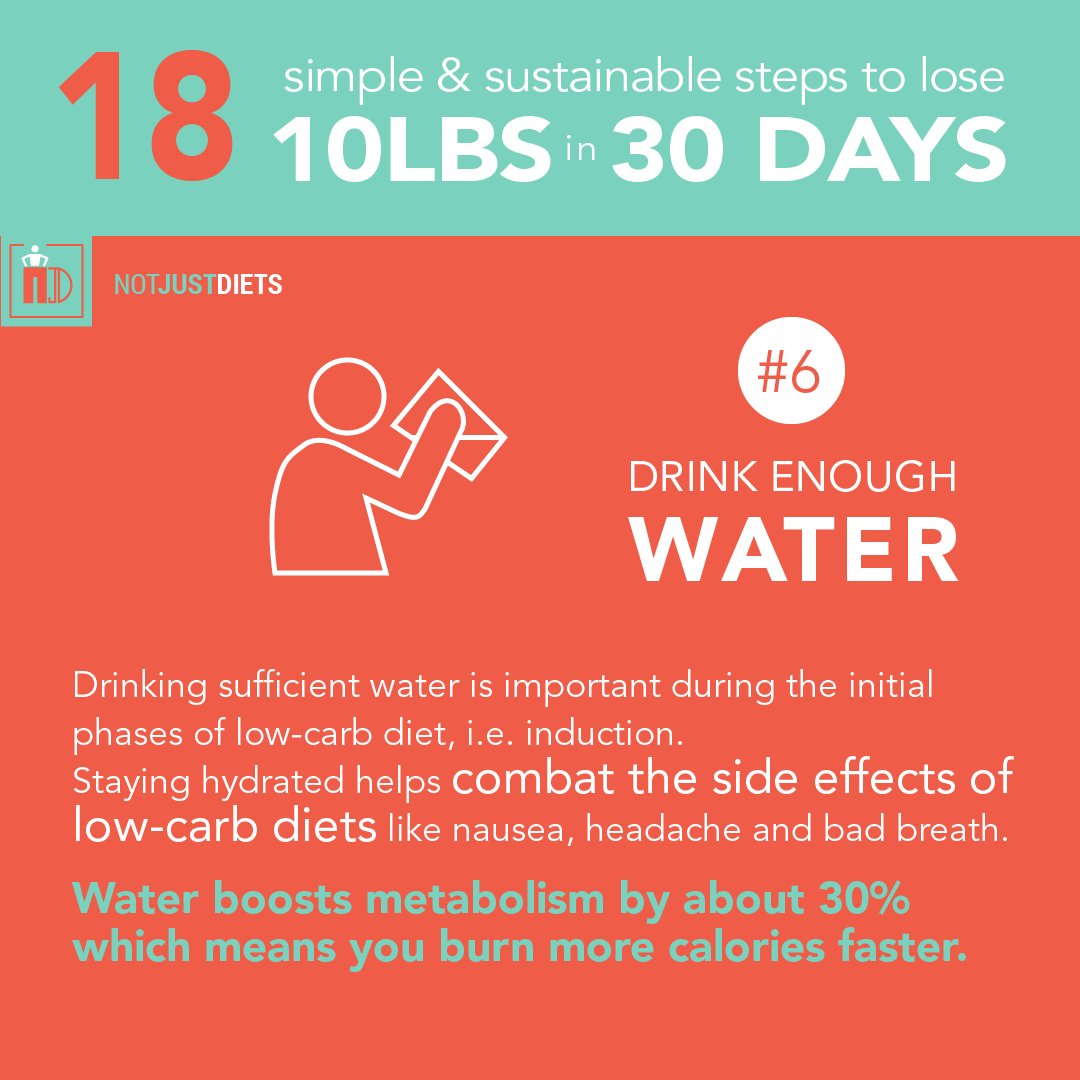
Research has shown that drinking two glasses of water before a meal helps consume fewer calories and aids in weight loss. Water boosts metabolism by about 30% which means you burn more calories faster.
Another small but powerful tip is to include more salt in your food. This helps increase water retention, therefore keeping you hydrated.
Step 7: Eat Slowly
Did you know that the brain takes a while to process the fact that you’re eating? If you’re gulping down your food, you probably overeat before you even realize you’re full.
Eating slowly not only helps you eat more consciously and savor each bite, but also helps with metabolism. Remember that the process of digestion starts right in the mouth when you chew your food. The more you chew, the more the food mixes with saliva to aid digestion.

Step 8: Avoid the stress
Stress and weight gain are close cousins and once you fall prey to either of them, the cycle of stress leading to weight gain and vice versa begins forming a vicious loop.
Some tried and tested ways of reducing stress are yoga, meditation and sports. If your job is a high-stress one, you need to find ways to keep the balance.
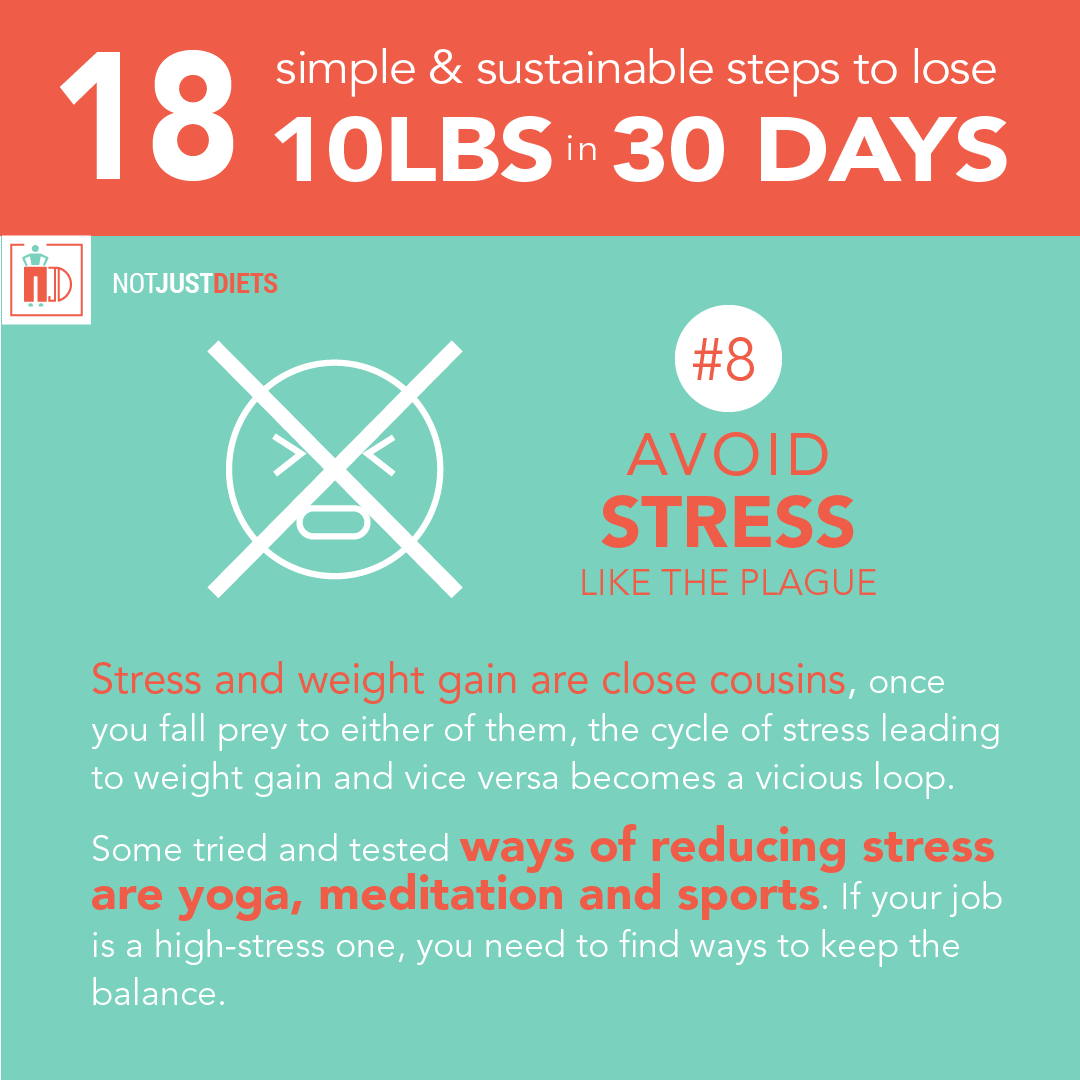
Step 9: Know your serving sizes and carb counts
It helps a lot to know how many carbs each serving size of different foods carries. This way you can judiciously approximate the food quantities in each of your meals.
This is again a system that adds ease and simplicity to your diet efforts.
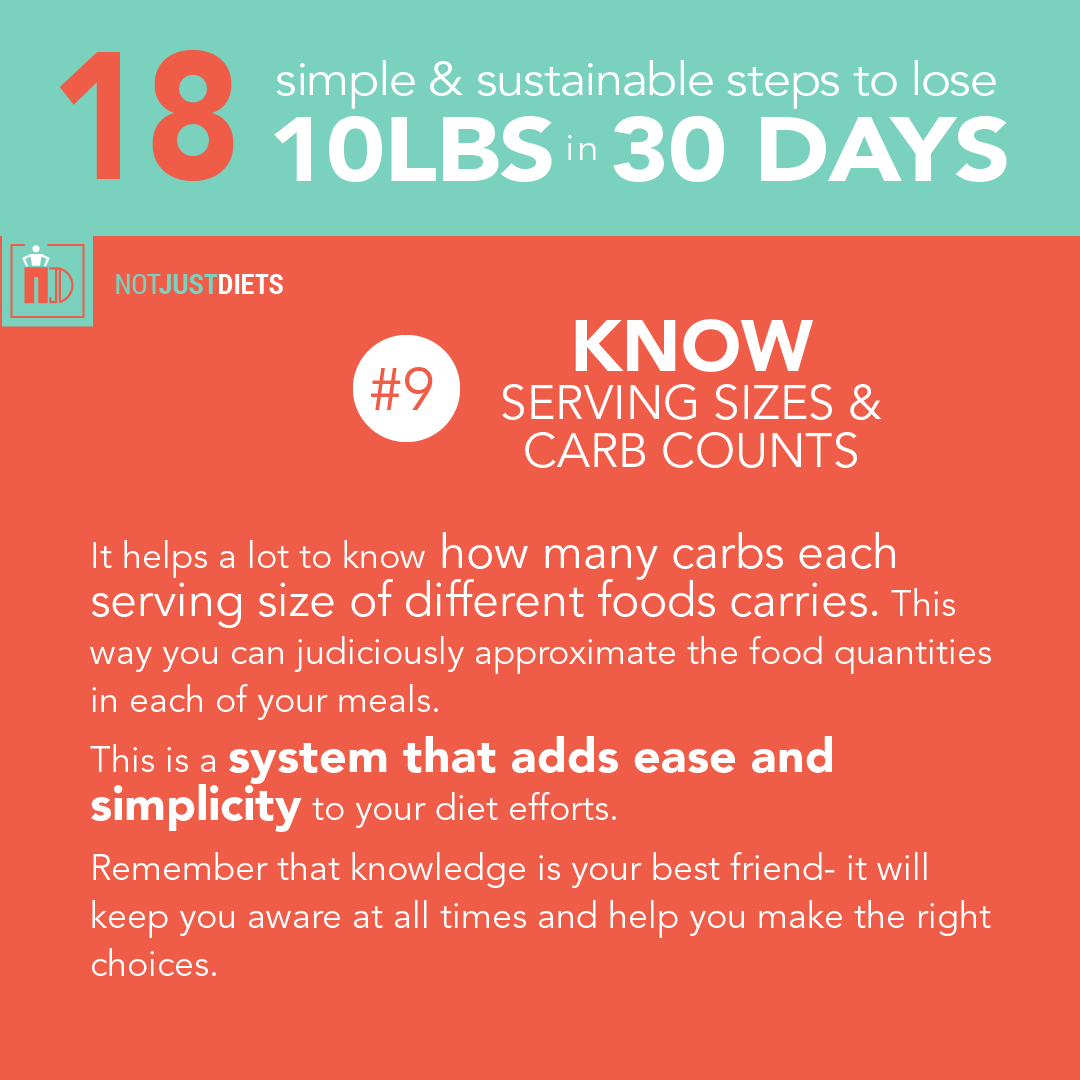
In fact, start right away! Pick up a handbook you can fit into your pocket and start making notes. Choose the low-carb foods you like and list them out with their carb counts and recipes. Take little sticky-notes and write important points and stick them on the wall opposite your bed. Over a period of time, you’ll develop an intuition for food choices and measures.
Remember that knowledge is your best friend- it will keep you aware at all times and help you make the right choices.
Step 10: Get enough sleep
Sleep is the best stress buster. Make sure you’re getting 7-8 hours of sleep every day. Sleep not only aids metabolism but also helps in cell-repair and growth which are essential for overall well being.
Sleep deprivation and stress have obvious physical implications but they are also harmful for mental health and motivation. It’s easier to slip up on your weight loss efforts and give up when you’re sleep deprived.
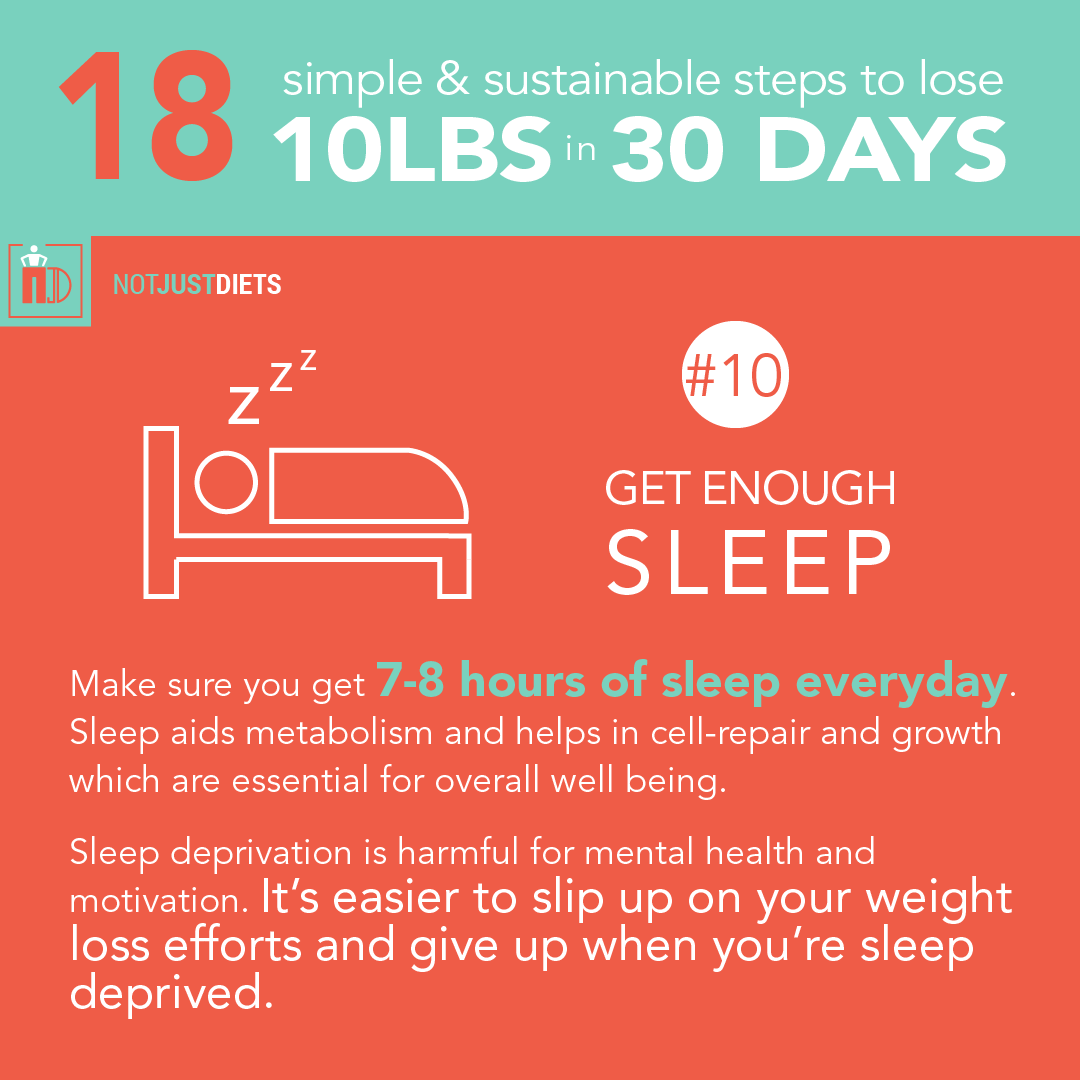
Step 11: Include enough of the right kind of vegetables in your diet
Vegetables form an important part of a healthy diet, especially in low-carb diets. Vegetables are not only a source of vitamins and minerals but are also rich in fiber. They help in maintaining a healthy gut.
Another reason why vegetables help with low-carb diets is their high water content which makes their energy-density low. This means that eating vegetables will make you feel full despite consuming little calories.
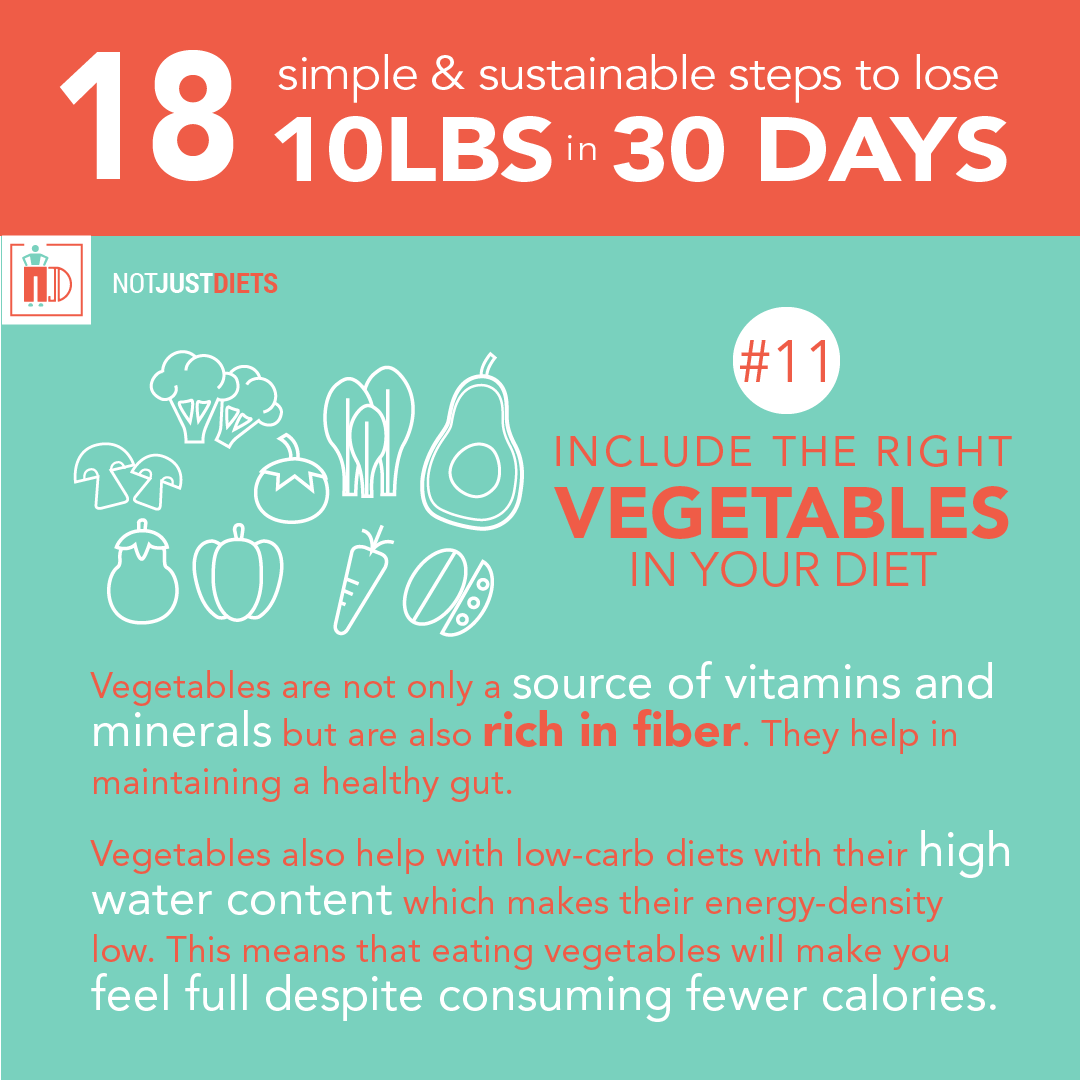
Eat plenty of low-carb veggies like broccoli, spinach, tomatoes, cucumbers, zucchini, cabbage, cauliflower, peppers, etc. Avoid tubers like potatoes and sweet potatoes that are full of starch.
Step 12: Join a low-carb community for inspiration
It is heartening to know that there are thousands of people working towards the same goals as you. Sharing your story and listening to others’ will give you the inspiration to keep up your efforts.
You will be surprised by how many communities there are and how encouraging people can be when it comes to weight loss. When you’re feeling down, motivation can be a huge savior.
Being a part of a community also tends to make you more accountable for your efforts. When you know your friends are waiting to hear from you about your progress, the chances of you getting lazy and slacking off are far less.
Online communities are a great place to share knowledge and personal experiences. You can share and learn from tips and tricks others have to offer. It also helps to see people who are a few steps ahead of you and learn from their mistakes.
What is even better than being encouraged and helped?
Motivating and helping others. Communities give you a chance to guide and lead others too which will give you a sense of pride and purpose and therefore energize your willpower.
A common cause can do wonders.
Step 13: Supplement the vitamins and minerals
Getting on low-carb diets can lead to nutrition deficiency in the long run. Cutting back on the amount of food you consume sometimes means your body isn’t getting enough vitamins and minerals.
Supplements are a great way to avoid nutritional deficiency.
A good weight loss system is one that not only helps you shed the pounds but also helps you effectively avoid or deal with the side effects. You don’t want serious issues hampering your weight loss progress, neither in the short term nor in the long run.
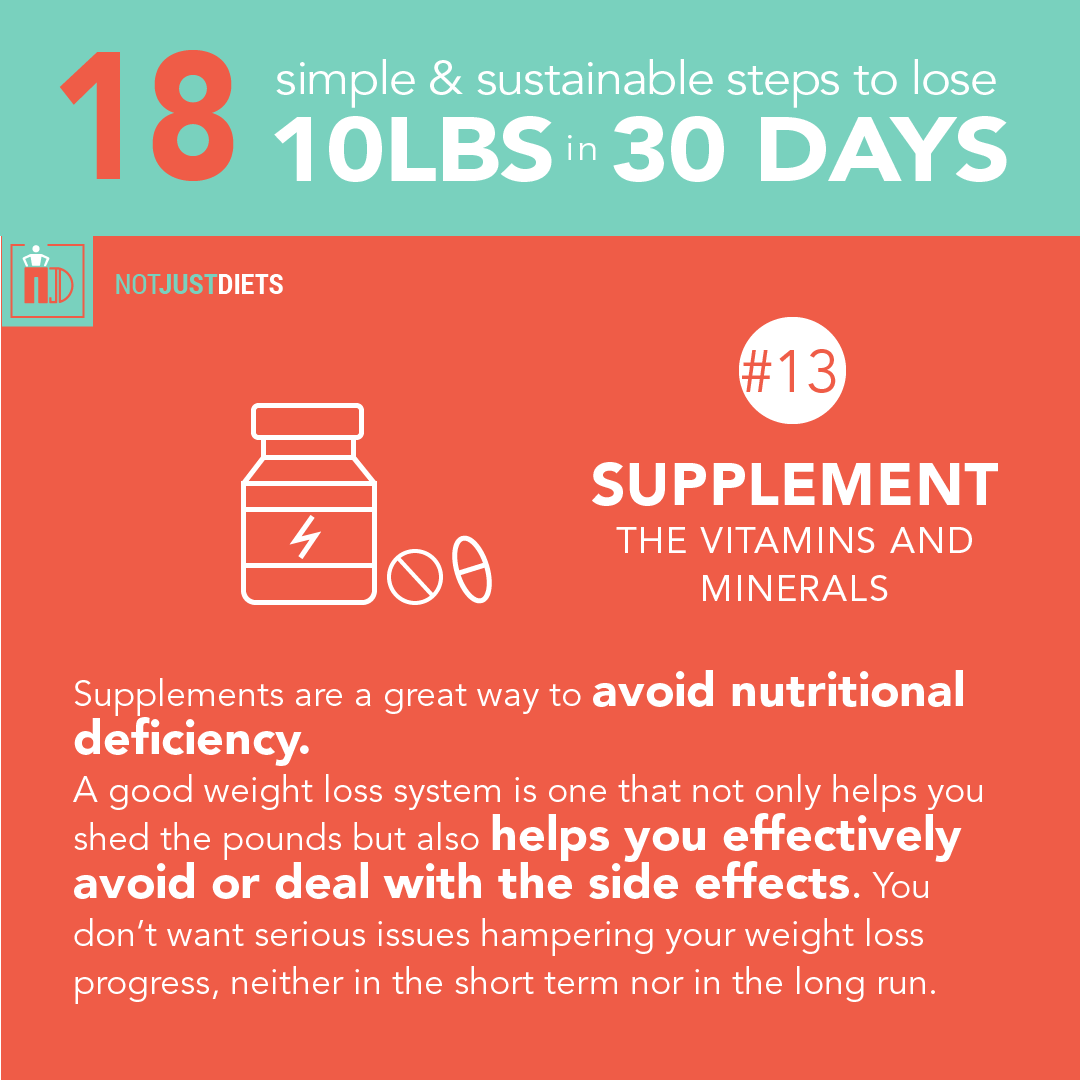
Step 14: Eat at Regular Times Everyday
This is a habit-forming exercise that will help you in the long run with your weight-loss and maintenance goals. Stick to your 3 meals a day instead of eating several small meals throughout the day. Research has shown that this is the most effective way to lose and maintain weight loss.
Try this routine consciously for 3-4 weeks till it becomes automatic. Remember the 21-day rule for habit-forming?

How does this system help?
You avoid unnecessary snacking and eating empty calories which is one of the main causes for obesity. You get rid of unconscious eating and improve your relationship with food.
Step 15: How to deal with the snacking habit
Generally, I would advise against eating anything apart from your three meals a day. However, if you have to snack, go for the low-carb alternatives. There are tons of snacking options that include vegetable sticks, yogurt, fruits and nuts that you can substitute for unhealthy chips, fries and soda.
It is also a great idea to carry your snacks with you to work so that when you get hungry between your meals, you don’t have to resort to unhealthy snacks for lack of healthier options. Keep a small box of a trail-mix or a handful of nuts in your bag at all times to make it the most convenient snack option. Like I said, convenience is the best way to save willpower.
Step 16: Lift weights to compliment your low-carb diet
Let’s face it, exercise is a crucial part of weight loss. It perfectly complements a low-carb diet. Of course, you don’t need it, but it definitely makes your efforts more effective.
You don’t need to beat yourself up at the gym though. Try lifting weights 3 times a week. This will not only help you burn fat but also prevent your metabolism from slowing down, which is a very common problem with weight loss.
Exercise helps to build your mental strength and grit. It gives you energy and will power to aid your weight loss efforts apart from directly resulting in weight loss itself.
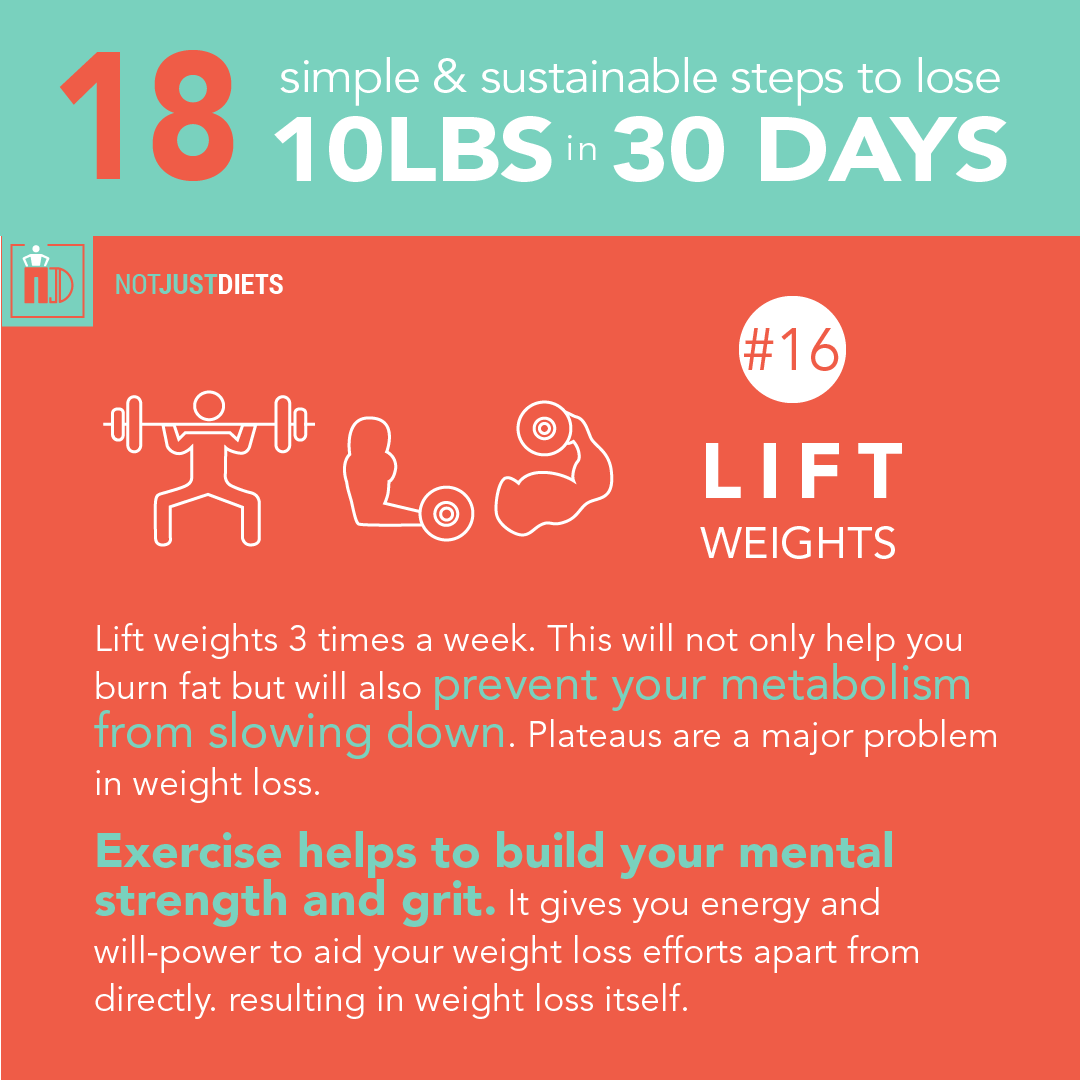
Step 17: Know what to eat when you have to eat out
No matter how hard you try, a lot of times, socializing means eating out. How do you keep at your low-carb goals then?
For your main dish, order foods that are low-carb and high-protein and fat like meat and eggs. Instead of rice or pasta on the side, ask for extra veggies. Drink water or sparkling water, tea or coffee instead of soda or beer.

Again, it helps a lot to know your alternative low-carb choices so that you don’t have to settle for food that harms your efforts, only because you didn’t know any better. It also doesn’t harm to ask the waiter for low-carb options on their menu or to make something off the menu too.
Step 18: Keep track of your progress
Another important way to organize and systemize your weight loss efforts is to measure your weight on a daily basis and record your progress.
This way, you can keep yourself in check. You can keep track of when you’re slacking off and activities that are or aren’t helping your goals and work on them.
It is also a good idea to maintain a food diary and record everything you eat during the day. Tallying your food with your weight records will help you judge foods that work and don’t work in your favor.
Keeping records is again a habit that you have to develop over time. Start with conscious efforts till it becomes automatic. One tip is to link this task to a daily habit that you already have in place. For example, measure your weight every morning after you brush your teeth. This way, you have cues to remind you and help you build this new habit of keeping records.
The Bottom Line
To sum it all up, remember that a systems approach is the best and most effective way to lose weight. Your focus should be on taking steps and developing habits that allow for long-term and sustainable weight loss.
If you’re getting on a diet, read up as much as you can about different foods and make lists about what to include and what to avoid. Be organized and let knowledge be your weapon.
Lastly, and most importantly, start right now! Take action and responsibility and you will keep the motivation up. Weight loss is a herculean task but it’s not impossible and with these steps, you should already be on your way to achieving your goals.
Leave a Reply